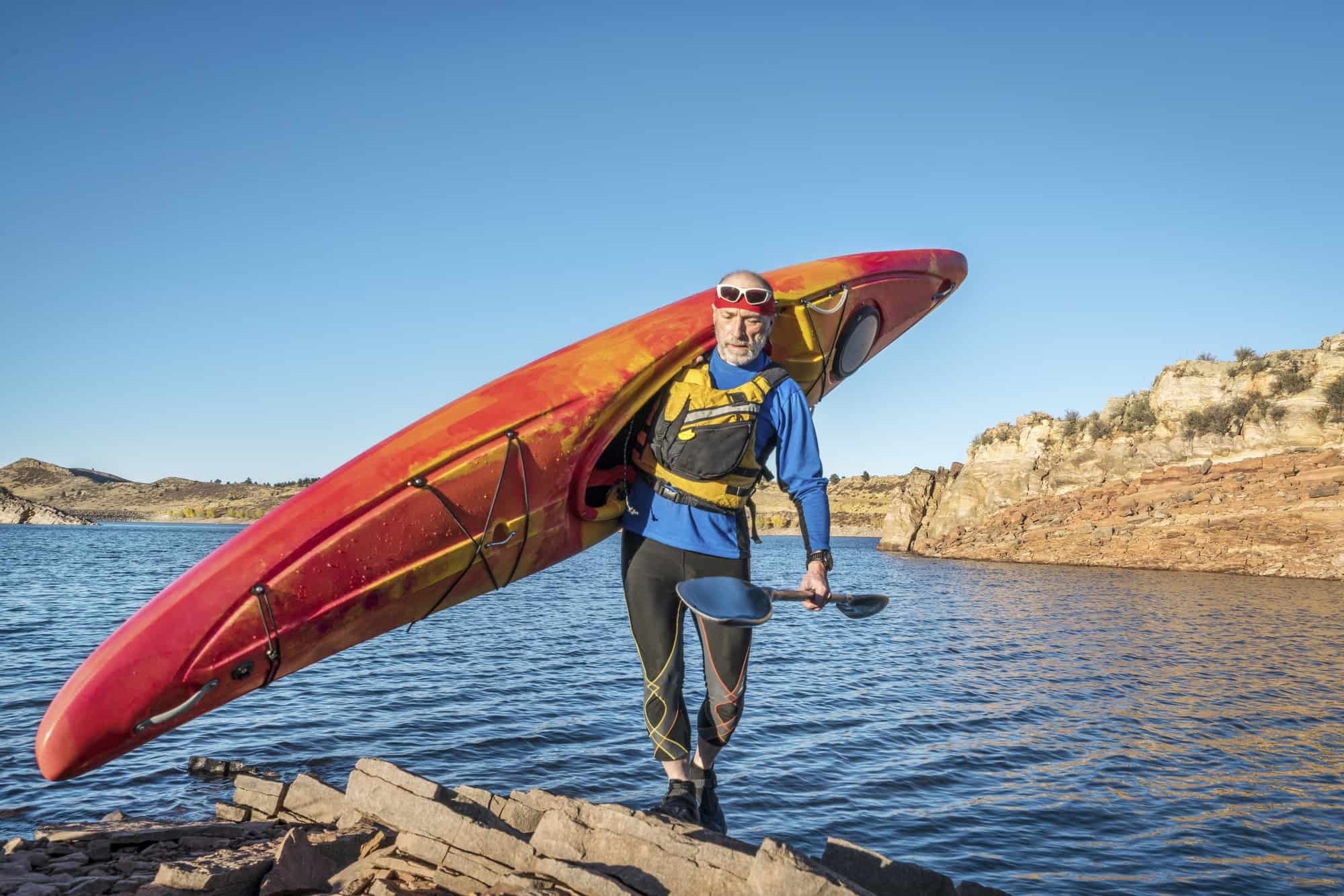Contents
So you’ve decided to take your kayak on an adventure, but you’ve come across an obstacle – a rocky, shallow section of the river that cannot be paddled through. Don’t worry, because in this article, you will learn how to portage a kayak like a pro. Portaging, or carrying your kayak over land, may seem intimidating at first, but with these simple steps and a bit of practice, you’ll be able to navigate any terrain and continue your exciting journey. Whether you’re a beginner or an experienced kayaker, this guide will provide you with the essential tips and techniques to successfully portage your kayak and keep your adventure going.
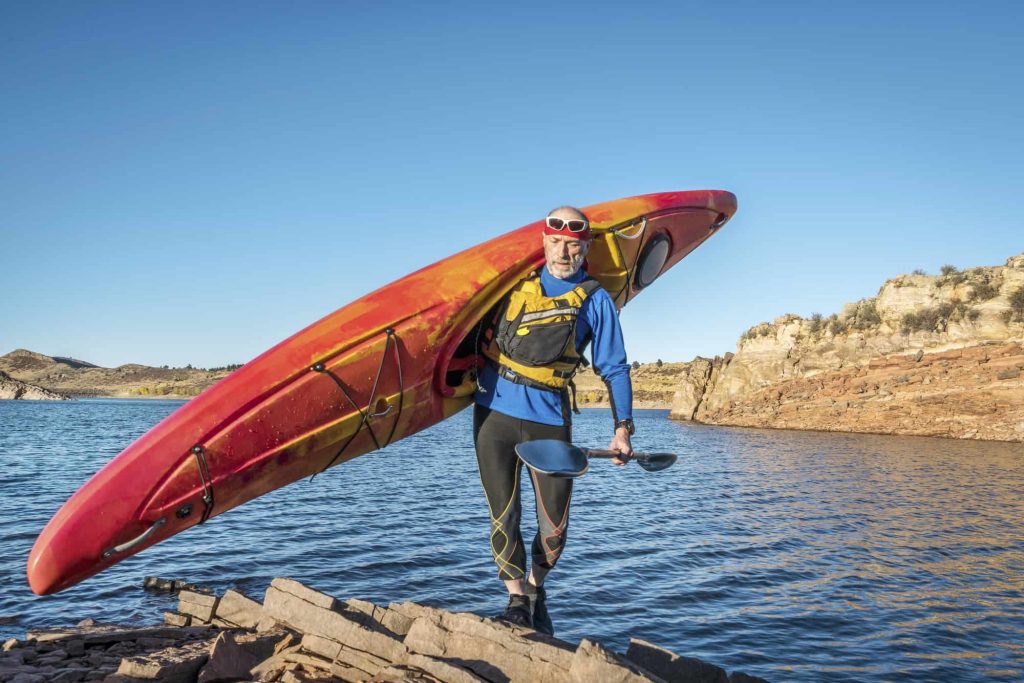
Choosing the Right Kayak for Portaging
When it comes to portaging, the weight and size of your kayak are two crucial factors to consider. You’ll want to choose a kayak that is lightweight and manageable for carrying long distances. A lighter kayak will make the portaging experience much more enjoyable and less physically taxing. Additionally, the size of the kayak should be appropriate for portaging. A shorter kayak will be easier to maneuver and carry on rough terrains, while a longer kayak might be more challenging and cumbersome.
Another important aspect to assess is the stability of the kayak. Since portaging involves carrying the kayak over land, it’s essential to choose a kayak that is stable and well-balanced. This will help keep the kayak steady while you’re transporting it, reducing the risk of accidents or damage to the kayak. Stability is especially crucial when navigating uneven or rough terrains during portaging.
In addition to stability, the durability of the kayak is essential for portaging. As you transport your kayak over various terrains, it may rub against rocks, branches, or other objects. Therefore, it’s crucial to choose a kayak that is made from durable materials and has sufficient protection, such as reinforced hulls or keel guards. A durable kayak will withstand the rigors of portaging and ensure that it remains in excellent condition throughout your adventures.
Preparing for Portaging
Before embarking on a portaging journey, it’s vital to gather all the necessary equipment. This includes essential items such as a paddle, life jacket, and any personal gear you may need. It’s essential to have these items readily accessible in case you encounter any obstacles or need to make adjustments during the porting process.
To ensure a safe and smooth portaging experience, it’s crucial to remove any loose or detachable items from your kayak. This includes accessories like fishing rod holders, cup holders, or any other items that aren’t securely attached. Removing these items will not only make the kayak more lightweight but also prevent them from getting damaged or lost during the portage.
Once you’ve prepared your kayak and gathered the necessary equipment, securely fasten the kayak on the roof rack of your vehicle. It’s important to ensure that the kayak is firmly strapped down and won’t shift or move during transport. Double-check the straps and make sure they are tight and secure. This will prevent any accidents or damage to your kayak while driving to the portage location.
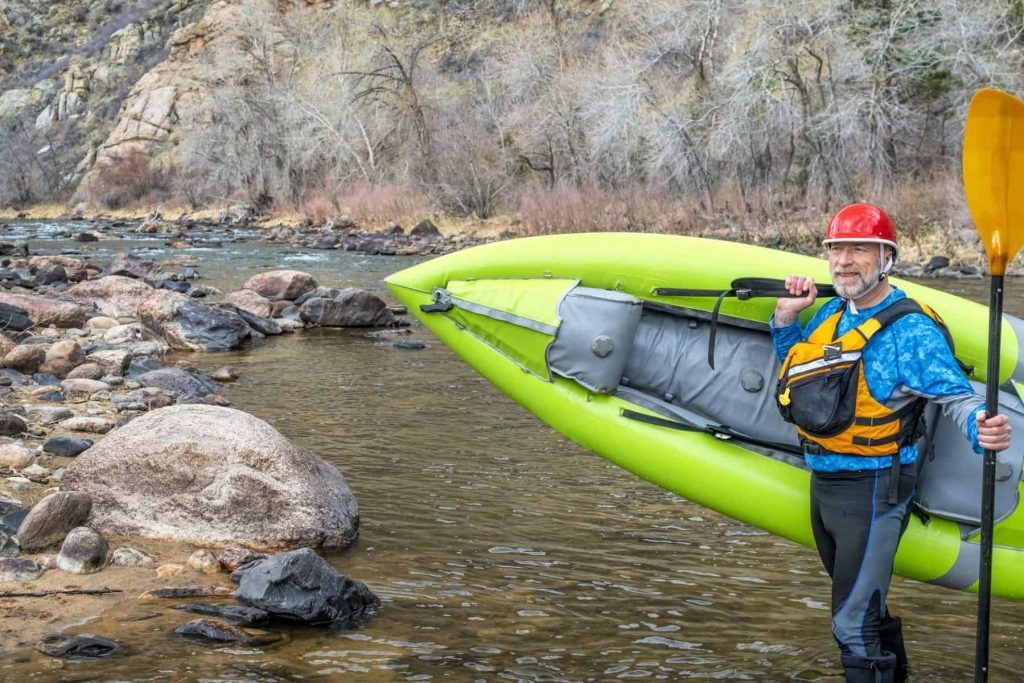
Basic Portaging Techniques
To effectively portage a kayak, it’s crucial to use proper lifting techniques. When lifting the kayak, bend your knees and lift with your legs rather than your back. This will reduce the strain on your back muscles and minimize the risk of injury. Additionally, try to distribute the weight of the kayak evenly as you lift it to maintain balance and control.
Determining the best carrying position for your kayak is also important. Generally, it’s recommended to carry the kayak upside down with the cockpit facing up. Gripping the kayak near the cockpit area and balancing it on your shoulder or hip can provide stability and ease of transport. Experiment with different carrying positions to find the one that is most comfortable and manageable for you.
During a long portaging journey, it’s essential to take regular breaks to avoid fatigue. Walking long distances while carrying a kayak can take a toll on your muscles and energy levels. Find a comfortable spot along the route to rest and re-energize. Hydrate frequently, stretch your muscles, and listen to your body’s needs. By taking breaks, you’ll be able to maintain your strength and endurance throughout the portaging adventure.
Portaging on Different Terrains
Portaging can take place on various terrains, each with its own challenges. Understanding the techniques for portaging on different terrains will ensure a smoother and more efficient experience.
When portaging on flat terrain, it’s important to maintain a steady pace and avoid tripping hazards. Keep an eye out for roots, rocks, or any other obstacles that could cause you to stumble. Also, be aware of the surface’s condition. Wet or slippery surfaces might require extra caution or the use of additional equipment, such as traction aids for your footwear.
Portaging on uneven terrain requires extra attention to balance and stability. Take smaller steps and be mindful of your footing. Look for stable ground and use walking poles if necessary. It’s also helpful to plan your route in advance, avoiding steep slopes or areas with loose gravel. By carefully navigating the uneven terrain, you’ll protect both yourself and your kayak during the portage.
Portaging through obstacles, such as fallen trees or boulders, can be challenging but manageable. Assess the obstacle’s height and width to determine the most suitable approach. In some cases, you may need to lift the kayak over the obstacle, while in others, you might be able to navigate around it. Take your time and proceed with caution to ensure the kayak’s safety and avoid unnecessary damage.

Solo vs. Team Portaging
Portaging can be done either solo or in a team, each with its own advantages and challenges. Understanding the pros and cons of both solo and team portaging can help you decide which option is best for your needs.
Solo portaging allows you to have complete control over the process. You can choose your own pace, rest when needed, and make decisions without depending on others. It provides a sense of independence and self-reliance. However, solo portaging can be physically demanding, especially when carrying a heavier kayak. It may also limit the distance you can cover and increase the risk of fatigue or injury.
Team portaging offers the advantage of shared responsibilities and support. You can distribute the weight of the kayak among team members, making it easier to carry. With more people, you can cover longer distances and overcome challenges more effectively. However, coordinating and communicating with your team may require additional effort and compromise. Everyone must be on the same page to ensure a smooth and successful portaging experience.
To have an effective team portaging experience, it’s essential to establish good teamwork. Clear communication, mutual trust, and a shared understanding of roles and responsibilities are key. Plan and coordinate your movements, so you work together efficiently. Regularly check in with each other and be willing to adapt and support one another. With effective teamwork, the challenges of portaging can be overcome more easily, and the experience can be rewarding for everyone involved.
Alternate Portaging Methods
While traditional portaging involves carrying the kayak over land, there are alternative methods that can make the process easier or more efficient. Consider these techniques if you’re looking for alternative ways to portage your kayak.
Using a kayak cart or dolly is a popular method for transporting kayaks over longer distances. These devices typically consist of a wheeled platform or frame that supports the kayak. By placing the kayak on the cart or dolly, you can push or pull it instead of carrying it. This method is particularly useful on even or paved surfaces, as the wheels provide effortless movement. However, it may not be suitable for rough terrains or areas with obstacles.
Using a shoulder yoke or sling is another option for portaging your kayak. This method involves attaching a padded yoke or sling to the kayak and resting it on your shoulders or neck. The weight of the kayak is distributed evenly along your upper body, allowing for a more comfortable and balanced portage. This technique is especially useful for shorter distances or when the terrain is too challenging for other methods.
If you find yourself without specific portaging equipment, you can use your kayak paddle as a makeshift handle. Simply remove the paddle blades and position the shaft across the cockpit area, gripping it firmly. This technique allows you to distribute the weight more evenly and gives you more control. However, keep in mind that this method may be less comfortable than using dedicated portaging equipment, especially for longer distances.
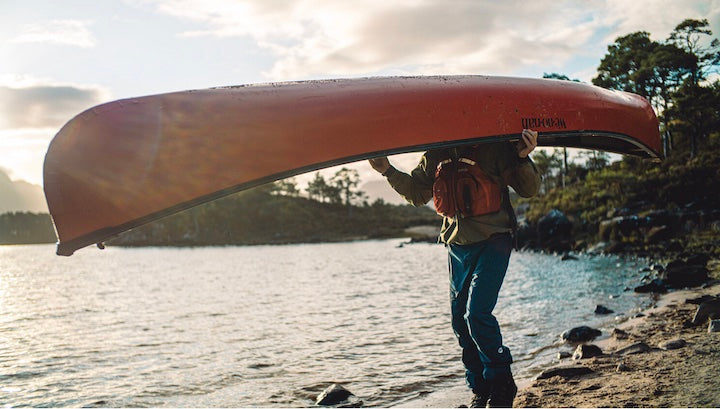
Portaging Safety Tips
Safety should always be a top priority when portaging a kayak. By following these safety tips, you can minimize the risk of accidents and ensure a smooth and enjoyable portaging experience.
Wearing proper footwear is essential for traction on various terrains. Opt for shoes that provide good grip and support, such as hiking boots or water shoes with non-slip soles. Avoid open-toe footwear or shoes with smooth soles, as they can increase the risk of slipping or tripping.
Being mindful of your surroundings is crucial during portaging. Keep an eye out for potential hazards, such as low-hanging branches, hidden rocks, or uneven surfaces. Stay alert and adjust your movements accordingly. Also, be respectful of the environment and avoid damaging vegetation or disturbing wildlife habitats.
Avoid overloading your kayak during portaging. Distribute the weight evenly and avoid exceeding the recommended maximum weight capacity of your kayak. Overloading can negatively affect stability and make portaging more challenging. If you need to transport additional gear, consider dividing the load among multiple trips or enlisting the help of others.
Making Portages Easier
To make the portaging experience easier and more efficient, consider implementing these tips and techniques:
Utilize a portage map or guide to plan your route in advance. This will help you identify potential obstacles, resting spots, or shorter alternative paths. Knowing the distance and terrain ahead of time allows you to prepare mentally and physically for the journey.
Practice efficient packing techniques to optimize the weight distribution in your kayak. Place heavier items closer to the cockpit and secure them properly. This will help maintain balance while carrying and minimize the strain on your muscles.
Maintaining good physical fitness is essential for a successful portaging adventure. Engage in regular exercise and strength training that target the muscles used during portaging. This will enhance your endurance, strength, and overall performance during the journey.
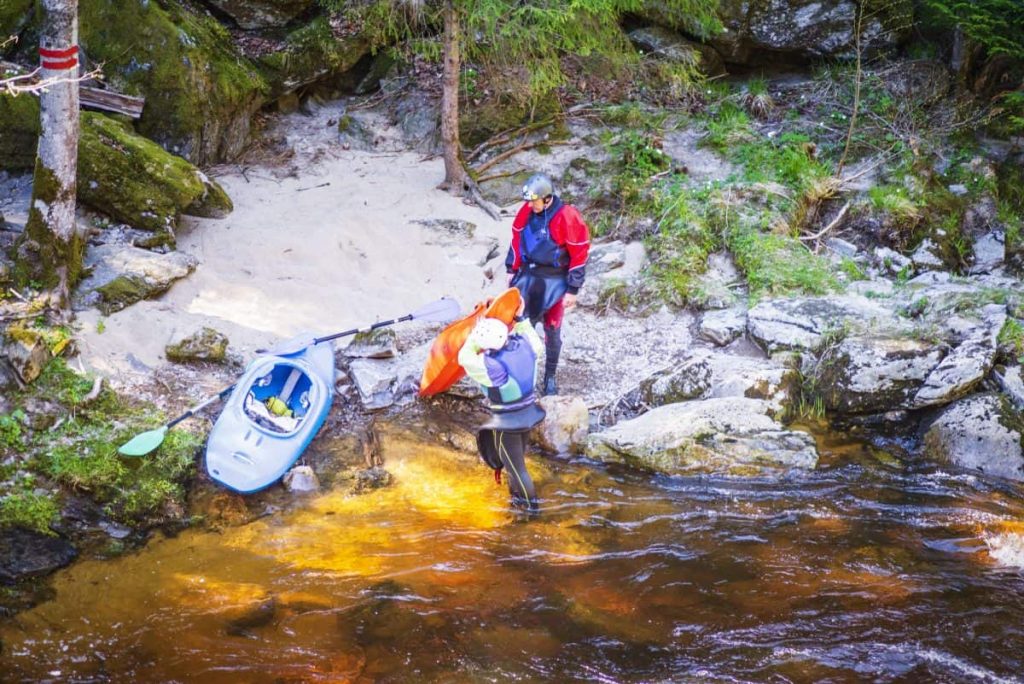
Etiquette and Considerations
Respecting private property and land rights is crucial during portaging. If you need to cross private land, seek permission from the landowner beforehand. Leave gates as you found them and follow any specific instructions or guidelines provided by the landowner. By respecting private property, you contribute to a positive relationship between kayakers and landowners.
Minimizing disturbances to wildlife and nature is another important aspect of responsible portaging. Avoid approaching nesting or breeding areas and maintain a safe distance from wildlife. Be mindful of noise levels and minimize any potential harm to the environment. By practicing good environmental stewardship, you help preserve natural habitats and protect the ecosystem.
Adhering to the principles of “leave no trace” is crucial when portaging. Pack out any trash or waste and dispose of it properly. Avoid leaving any signs of your presence, such as footprints or disturbed vegetation. By leaving no trace, you leave the environment as pristine as you found it and ensure that future generations can enjoy the same natural beauty.
Overcoming Common Portaging Challenges
Portaging presents a variety of challenges, but with the right strategies, they can be overcome. Here are some tips for dealing with common portaging challenges:
Dealing with muddy or slippery terrain can be tricky, especially when carrying a kayak. Wear appropriate footwear with good grip to minimize the risk of slipping. Take smaller steps and be mindful of your balance. If necessary, use walking poles or traction aids to enhance stability and prevent accidents.
Handling heavy or awkward kayaks can be challenging, especially during solo portaging. Break the task down into smaller steps and use proper lifting techniques. Consider using alternative portaging methods, such as a cart or sling, to make it more manageable. Enlist the help of others if available, as a team effort can significantly reduce the strain.
Effectively crossing water bodies poses unique challenges during portaging. If the water is shallow enough, you can wade across while carrying the kayak. Take small, careful steps and use a walking stick or pole for stability. If the water is too deep, consider finding a suitable crossing point or using alternative transportation methods, such as a boat ferry or shuttle service.
With proper planning, preparation, and knowledge, you can have a successful and enjoyable portaging experience with your kayak. By considering factors such as kayak choice, portaging techniques, safety precautions, and environmental considerations, you’ll be well-equipped to explore new waters and navigate challenging terrains. So grab your kayak, gather your gear, and embark on your next portaging adventure with confidence!

